Customer Service Complaint Response Letter Template
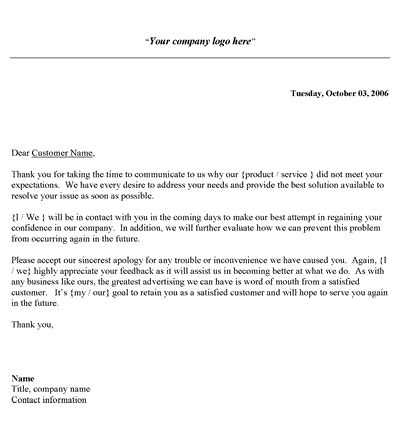
In any business or organization, addressing customer concerns with professionalism and care is essential. Crafting a clear and respectful reply can turn a negative experience into an opportunity to build trust and satisfaction. A well-structured response is vital for maintaining positive relationships and improving overall perception.
By focusing on empathy, understanding, and providing constructive solutions, companies can ensure that their responses not only resolve the problem at hand but also demonstrate a commitment to high-quality interactions. This approach not only addresses immediate issues but also helps foster long-term loyalty.
Utilizing an organized format to communicate your message clearly can streamline the process, ensuring consistency and efficiency. This practice can be particularly valuable when responding to multiple inquiries, making sure that each reply is thoughtful and appropriately tailored to the individual situation.
Understanding the Importance of Response Letters
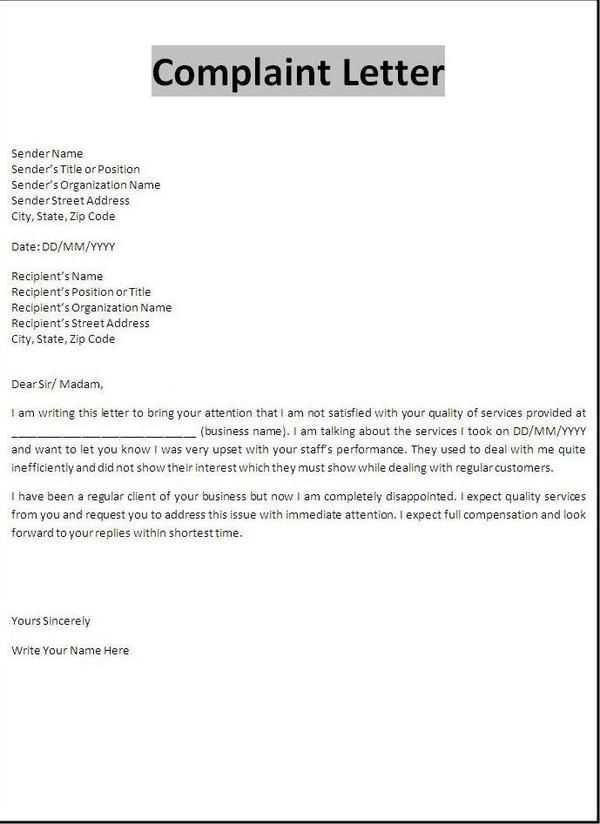
Addressing concerns in a timely and thoughtful manner is crucial for maintaining a positive relationship with any individual or group. When issues arise, a well-crafted reply can serve as an opportunity to show professionalism, empathy, and a commitment to resolving the matter effectively. The quality of communication directly impacts how the situation is perceived, making it an essential aspect of any organization’s reputation.
Being able to express understanding and a willingness to correct any problems can strengthen trust and enhance the overall experience for those involved. A prompt and clear message not only helps resolve the current issue but also leaves a lasting impression that contributes to long-term loyalty. This is why mastering the art of writing clear, concise, and empathetic replies is so important in managing relationships.
Effective communication can turn potentially negative situations into positive outcomes, ensuring that both the individual and the organization are satisfied with the resolution. In many cases, a well-written communication can prevent further complications, offering a chance to build stronger ties and demonstrate a proactive approach to problem-solving.
Why Timely Replies Matter in Customer Service
Responding quickly to any issue or inquiry is essential for maintaining a positive relationship with those who engage with your organization. The faster the reply, the more likely it is that the situation will be resolved before frustration or dissatisfaction sets in. This approach ensures that concerns are addressed promptly, which is critical for enhancing overall trust and confidence in your approach.
Building Trust Through Swift Action
When people feel that their concerns are being taken seriously and dealt with quickly, they are more likely to view the organization in a favorable light. Timeliness in replies shows that you value the individual’s time and are committed to finding solutions efficiently. This builds a sense of reliability and transparency, which is essential in maintaining strong connections.
Avoiding Escalation and Further Issues
By providing quick replies, you prevent problems from escalating or becoming more complex. Delayed responses may lead to increased frustration, which can result in negative feedback or further complications. A timely message helps contain the issue, ensuring that it does not develop into a bigger concern, allowing for a smoother resolution process.
Key Elements of an Effective Response
An effective communication is not just about addressing the issue at hand, but also about conveying sincerity, understanding, and a commitment to resolution. The core of a strong reply lies in its clarity, tone, and structure. Ensuring that the message is precise and demonstrates genuine concern can greatly influence the outcome of the interaction.
One essential element is acknowledging the situation quickly, which shows the recipient that their concerns are taken seriously. Equally important is offering a clear explanation or solution, providing confidence that the matter is being handled appropriately. Lastly, maintaining a positive and respectful tone throughout the message reinforces professionalism and helps to de-escalate any potential tensions.
What to Include in a Complaint Reply
When addressing an issue raised by an individual, it is important to ensure that the message is comprehensive, clear, and solution-oriented. A well-crafted reply should provide a sense of resolution, acknowledge the concern, and guide the recipient towards the next steps. Including the right elements will help ensure that the message is effective and leaves a positive impression.
Acknowledgment of the Issue
Start by recognizing the individual’s concern. Acknowledge the difficulty they encountered, and show empathy for their experience. This step demonstrates that you understand the situation and are committed to addressing it. Avoiding a dismissive tone is key to making the recipient feel heard and valued.
Offering a Clear Solution
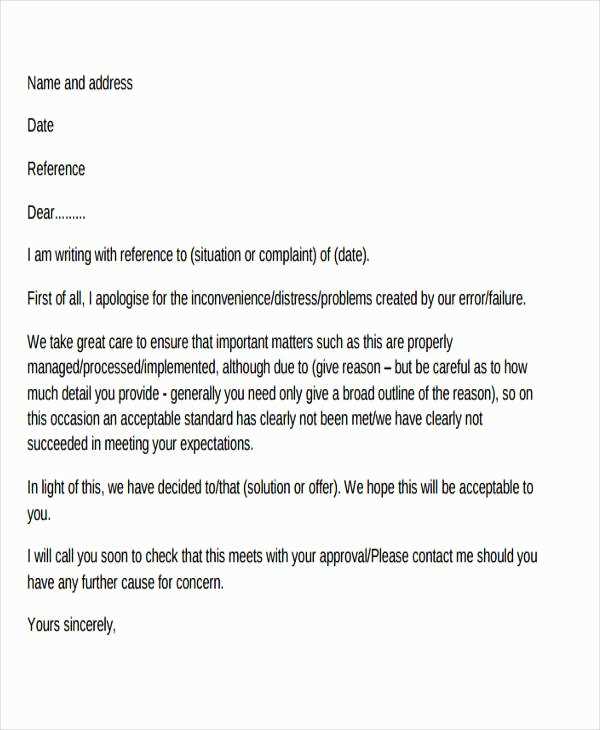
Providing a clear course of action or a solution is essential. Be specific about how you plan to resolve the issue, and, if applicable, outline any steps the recipient can take. Offering a concrete solution, rather than a vague promise, helps to rebuild trust and reassures the individual that their concern is being handled with care.
How to Address Customer Concerns Professionally
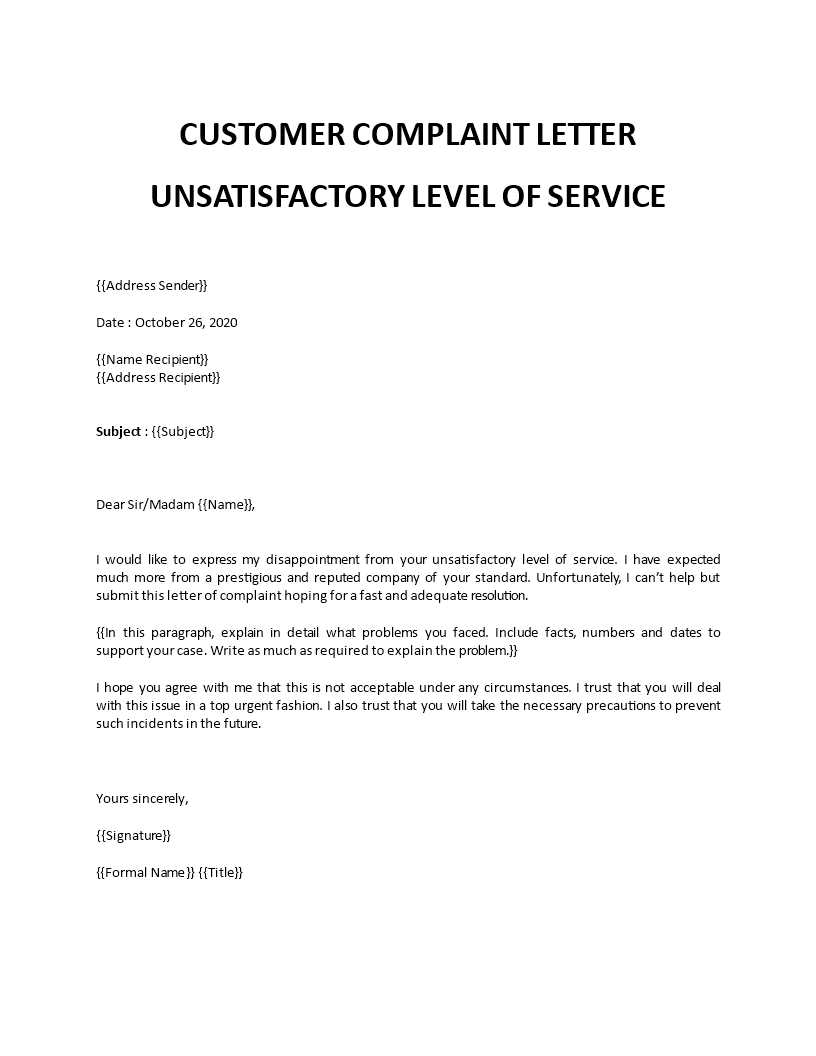
When dealing with concerns raised by individuals, it’s essential to handle the situation with respect, clarity, and professionalism. Ensuring that your communication is constructive and considerate can go a long way in maintaining trust and satisfaction. The key to addressing issues effectively lies in the tone, structure, and substance of the message.
Maintain a Calm and Respectful Tone
One of the most important aspects of addressing concerns is using a calm and respectful tone. This helps to prevent the situation from escalating and reassures the recipient that their issue is being taken seriously. Even in difficult situations, keeping a polite and professional demeanor demonstrates that you are focused on finding a solution.
Be Clear and Transparent
Clarity is critical when addressing concerns. Avoid vague language and instead provide clear, transparent explanations or solutions. This ensures that the recipient understands what actions are being taken, and it prevents any confusion or miscommunication. Offering transparency in your message shows accountability and builds confidence in your commitment to resolve the issue.
Strategies for Handling Negative Feedback
Effectively managing negative feedback is crucial for maintaining positive relationships and ensuring ongoing improvement. When faced with criticism, how you respond can significantly impact both your reputation and the individual’s perception of the situation. By employing thoughtful strategies, you can transform negative feedback into an opportunity for growth and enhanced trust.
Listen Actively and Acknowledge Concerns
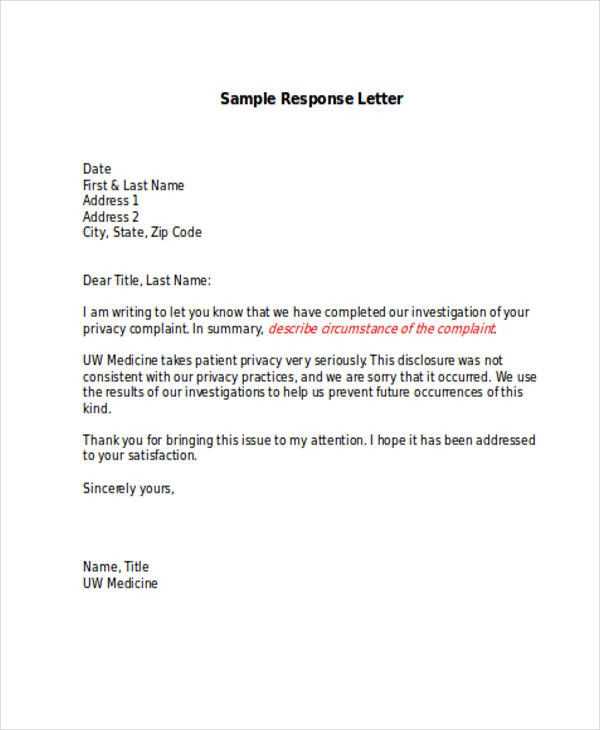
The first step in handling negative feedback is to truly listen and understand the concern being raised. Acknowledging the issue without rushing to defend or dismiss it shows respect and helps to diffuse any initial tension. This approach allows for a more productive conversation and increases the likelihood of a positive resolution.
Offer Solutions and Take Responsibility
Once the issue is understood, it’s important to provide clear solutions. Taking responsibility for the problem, when appropriate, and offering actionable steps toward resolution demonstrates accountability and professionalism. Focusing on resolution, rather than placing blame, shifts the focus to solving the problem and improving the situation.
| Strategy | Benefits |
|---|---|
| Active Listening | Helps build trust and understanding |
| Empathy | Reduces tension and shows care |
| Solution-Oriented Approach | Turns the situation into a positive outcome |
Creating a Customer-Focused Letter
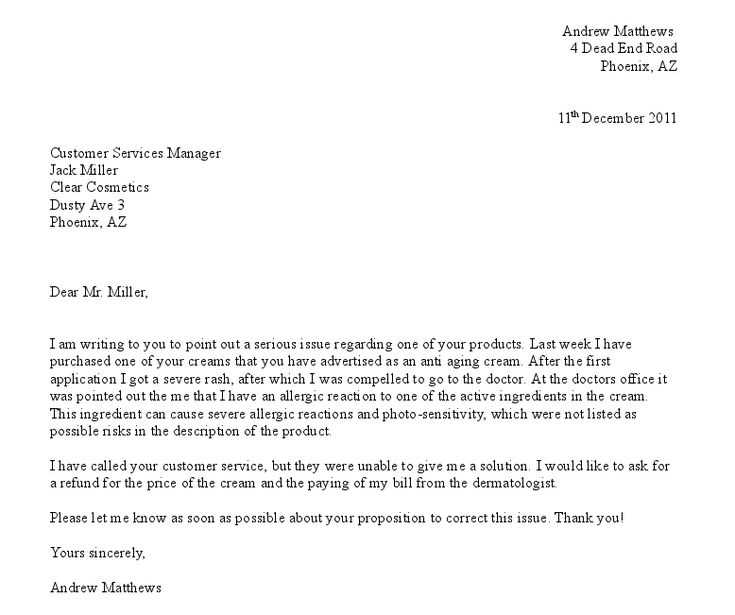
Crafting a communication that prioritizes the individual’s needs is essential in building and maintaining trust. A well-structured message that emphasizes empathy, understanding, and a genuine desire to resolve the issue can go a long way in ensuring satisfaction. The focus should always be on the recipient’s perspective, acknowledging their feelings and providing a path toward resolution.
Key Principles for Crafting a Customer-Centered Message
When creating a message that is focused on the individual’s needs, there are several important aspects to consider:
- Empathy: Recognizing and validating the individual’s feelings and concerns helps establish rapport.
- Clarity: Clearly outlining the steps you will take ensures the individual understands the solution.
- Respect: Maintaining a tone of respect throughout the communication fosters a positive atmosphere.
- Positivity: Focusing on the positive aspects of the solution rather than the problem reinforces confidence.
Steps to Ensure a Positive Interaction
To further enhance the recipient’s experience, consider the following steps:
- Start with a warm greeting and express genuine concern for their situation.
- Clearly explain the actions being taken to address the issue.
- Reassure the individual that their satisfaction is a priority.
- End on a positive note, inviting further communication if needed.
Writing with Empathy and Clarity
Effective communication hinges on the ability to convey understanding while providing clear, actionable information. Writing with both empathy and clarity ensures the recipient feels heard and informed. It is crucial to balance compassion with precision, so the message is both sensitive and informative. By carefully considering tone and structure, you can craft a message that addresses concerns while offering a transparent path forward.
Key Aspects of Empathetic Communication
To write with empathy, it’s essential to acknowledge the feelings of the recipient and show a sincere understanding of their situation. Here are some key components to include:
- Active Listening: Demonstrating that you understand their concerns by restating or paraphrasing what they’ve shared.
- Compassionate Language: Using phrases that convey care and concern, making the recipient feel supported.
- Genuine Apologies: Offering sincere apologies where appropriate, without deflecting responsibility.
Ensuring Clarity in Your Message
Along with empathy, clear communication is vital. Ensure your message is straightforward and easy to understand by following these principles:
- Use simple and concise language, avoiding unnecessary jargon or complex phrases.
- Provide specific details on the steps being taken to resolve the issue.
- Ensure the recipient knows what actions they can expect and what they need to do next.